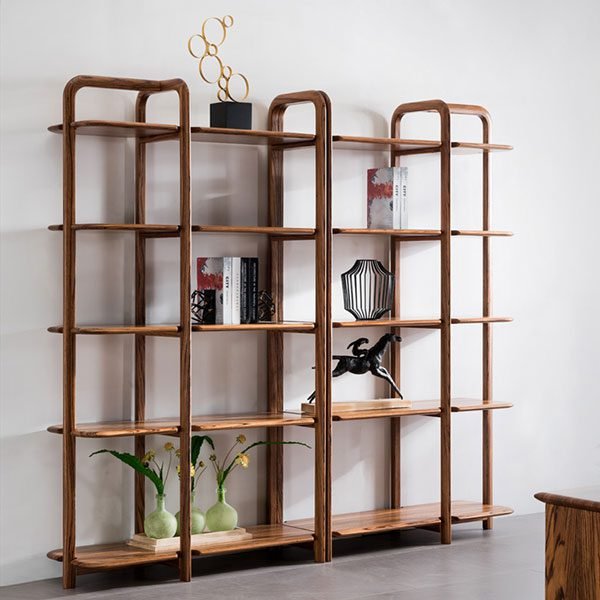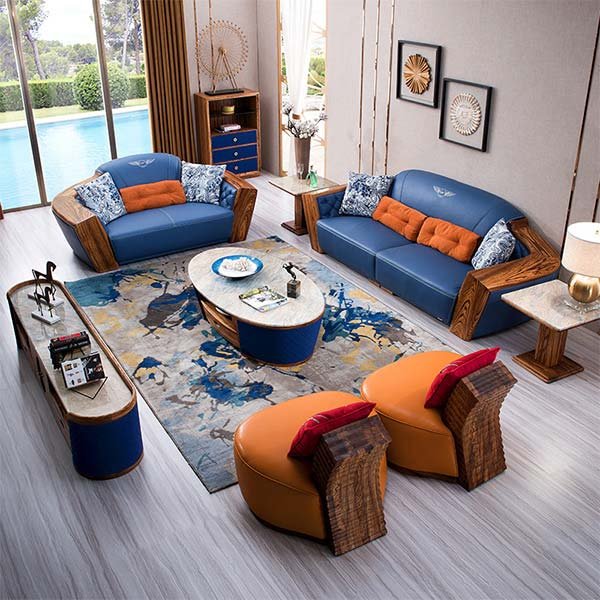“История дивана: от традиционного к современному”
Evolution of Sofa Designs
The history of the sofa is a fascinating journey that spans centuries and continents. From its humble beginnings as a simple bench to its modern incarnation as a stylish and comfortable piece of furniture, the evolution of sofa designs reflects the changing tastes and lifestyles of society.
The earliest known sofas can be traced back to ancient Egypt, where they were used by the pharaohs and their courtiers. These early sofas were made of wood and featured cushions made of animal skins or woven reeds. They were often adorned with intricate carvings and painted with vibrant colors.
As civilizations advanced, so did the design of sofas. In ancient Greece and Rome, sofas became more elaborate and were often used as a status symbol. They were made of expensive materials such as marble and adorned with luxurious fabrics and cushions. These sofas were typically used in public spaces, such as theaters and banquet halls, where people would gather to socialize and relax.
During the Middle Ages, sofas took on a more practical and functional design. They were often made of oak or other sturdy woods and featured high backs and arms for added comfort and support. These sofas were typically found in the homes of the wealthy and were used for lounging and entertaining guests.
The Renaissance period saw a resurgence of interest in classical design, and sofas became more ornate and decorative. They were often upholstered in rich fabrics such as velvet and adorned with intricate carvings and gilded accents. These sofas were considered works of art and were often passed down through generations as family heirlooms.
The Industrial Revolution in the 18th and 19th centuries brought about significant changes in sofa design. With the advent of mass production, sofas became more affordable and accessible to the middle class. They were often made of wood or metal frames and featured padded seats and backs for added comfort. These sofas were designed to be functional and practical, catering to the needs of a rapidly growing urban population.
In the 20th century, the modernist movement revolutionized sofa design. Influenced by the principles of simplicity and functionality, modern sofas featured clean lines and minimalistic designs. Materials such as leather, chrome, and fiberglass were used to create sleek and futuristic-looking sofas. These designs were a departure from the ornate and decorative styles of the past and reflected the changing aesthetic preferences of the time.
Today, sofas come in a wide variety of styles and designs to suit every taste and preference. From traditional Chesterfield sofas with their tufted leather upholstery to sleek and contemporary sectional sofas, there is a sofa for every home and lifestyle. The evolution of sofa designs continues to evolve as designers push the boundaries of creativity and innovation.
In conclusion, the history of the sofa is a testament to the ever-changing nature of design and the influence of society on furniture. From its humble beginnings in ancient Egypt to its modern incarnation as a statement piece in contemporary homes, the sofa has evolved to meet the needs and desires of each era. Whether it’s a traditional sofa with intricate carvings or a modern sectional sofa with clean lines, the sofa remains a staple in homes around the world.
Influence of Cultural and Historical Factors on Sofa Styles
Influence of Cultural and Historical Factors on Sofa Styles
The history of the sofa is a fascinating journey that has been shaped by various cultural and historical factors. From its humble beginnings as a simple piece of furniture to its evolution into a symbol of comfort and luxury, the sofa has undergone significant transformations over the centuries.
One of the earliest influences on sofa styles can be traced back to ancient civilizations such as Egypt and Greece. In these societies, sofas were often used for lounging and relaxation. They were typically made of stone or wood and adorned with intricate carvings and decorations. These early designs set the foundation for the development of more elaborate and ornate sofa styles in later periods.
During the Renaissance period, the sofa became a status symbol among the wealthy and aristocratic. Influenced by the grandeur and opulence of the time, sofas were designed to be extravagant and luxurious. They were often upholstered in rich fabrics such as velvet and adorned with intricate embroidery and gold leaf accents. These elaborate designs reflected the social status and wealth of their owners.
The Industrial Revolution in the 18th and 19th centuries brought about significant changes in sofa styles. With the advent of mass production, sofas became more accessible to the middle class. The focus shifted from intricate designs to functionality and comfort. Sofas were now designed to accommodate larger numbers of people and were often made with sturdy frames and cushioned seats. This shift in design was influenced by the changing social dynamics of the time, as families began to spend more time together in their living spaces.
The 20th century saw a revolution in sofa styles, driven by advancements in technology and changing cultural norms. The Art Deco movement of the 1920s and 1930s introduced sleek and geometric designs, with sofas featuring clean lines and bold colors. This style reflected the modernist ideals of the time and was influenced by the rise of industrialization and urbanization.
In the post-war era, the concept of comfort became paramount in sofa design. Sofas were now designed with ergonomics in mind, with features such as reclining mechanisms and adjustable headrests. This shift in design was influenced by the changing lifestyles of the time, as people sought more relaxation and comfort in their homes.
Today, sofa styles continue to evolve, influenced by a combination of cultural, historical, and technological factors. Modern sofas often feature minimalist designs, with clean lines and neutral colors. They are designed to be versatile and adaptable to different living spaces. The rise of sustainable and eco-friendly design has also influenced sofa styles, with an emphasis on using environmentally friendly materials and manufacturing processes.
In conclusion, the history of the sofa is a testament to the influence of cultural and historical factors on furniture design. From the ancient civilizations to the modern era, the evolution of sofa styles has been shaped by changing social dynamics, technological advancements, and shifting cultural norms. As we continue to progress, it will be interesting to see how these factors continue to shape the future of sofa design.
Impact of Technological Advancements on Sofa Manufacturing
Impact of Technological Advancements on Sofa Manufacturing
Technological advancements have had a significant impact on various industries, and the furniture industry is no exception. In particular, the manufacturing of sofas has been greatly influenced by these advancements. This article will explore the ways in which technology has revolutionized sofa manufacturing, from traditional to modern designs.
One of the most notable advancements in sofa manufacturing is the use of computer-aided design (CAD) software. This technology allows designers to create detailed and precise 3D models of sofas, which can then be used to guide the manufacturing process. CAD software has greatly improved the efficiency and accuracy of sofa production, as it eliminates the need for manual measurements and guesswork. Additionally, it allows designers to experiment with different shapes, sizes, and materials, resulting in more innovative and unique sofa designs.
Another technological advancement that has had a significant impact on sofa manufacturing is the use of automated machinery. In the past, sofas were primarily made by hand, which was a time-consuming and labor-intensive process. However, with the introduction of automated machinery, the production of sofas has become much faster and more efficient. These machines can cut, shape, and assemble sofa components with precision and speed, resulting in higher productivity and lower production costs.
Furthermore, advancements in materials and fabrics have also influenced sofa manufacturing. The development of new materials, such as memory foam and microfiber, has allowed for the creation of more comfortable and durable sofas. These materials offer enhanced support and are resistant to wear and tear, ensuring that sofas maintain their quality and appearance for a longer period of time. Additionally, technological advancements in fabric production have made it possible to create sofas with a wide range of colors, patterns, and textures, allowing for greater customization and personalization.
In recent years, technology has also played a role in improving the sustainability of sofa manufacturing. With growing concerns about the environment, manufacturers have started to incorporate eco-friendly practices into their production processes. For example, some companies are using recycled materials in the construction of sofas, reducing waste and minimizing the use of natural resources. Additionally, advancements in energy-efficient machinery have helped reduce the carbon footprint of sofa manufacturing, making it a more sustainable industry.
In conclusion, technological advancements have had a profound impact on sofa manufacturing. From the use of CAD software to automated machinery, these advancements have improved the efficiency, accuracy, and productivity of sofa production. Furthermore, advancements in materials and fabrics have resulted in more comfortable and durable sofas, while also allowing for greater customization. Lastly, technology has played a role in making sofa manufacturing more sustainable, with the incorporation of eco-friendly practices. As technology continues to advance, it is likely that the future of sofa manufacturing will be even more innovative and sustainable.
Заключение
Заключение: История дивана от традиционного к современному показывает эволюцию этой мебельной формы на протяжении многих веков. Начиная с простых каменных скамеек и деревянных лавок, диваны постепенно стали более комфортными и роскошными, с использованием мягких материалов и удобных подушек. В современных диванах мы видим разнообразие стилей, форм и функций, от модульных и угловых диванов до раскладных и диванов-кроватей. История дивана является отражением изменений в обществе, вкусах и потребностях людей, и продолжает развиваться, чтобы соответствовать современным требованиям комфорта и стиля.



